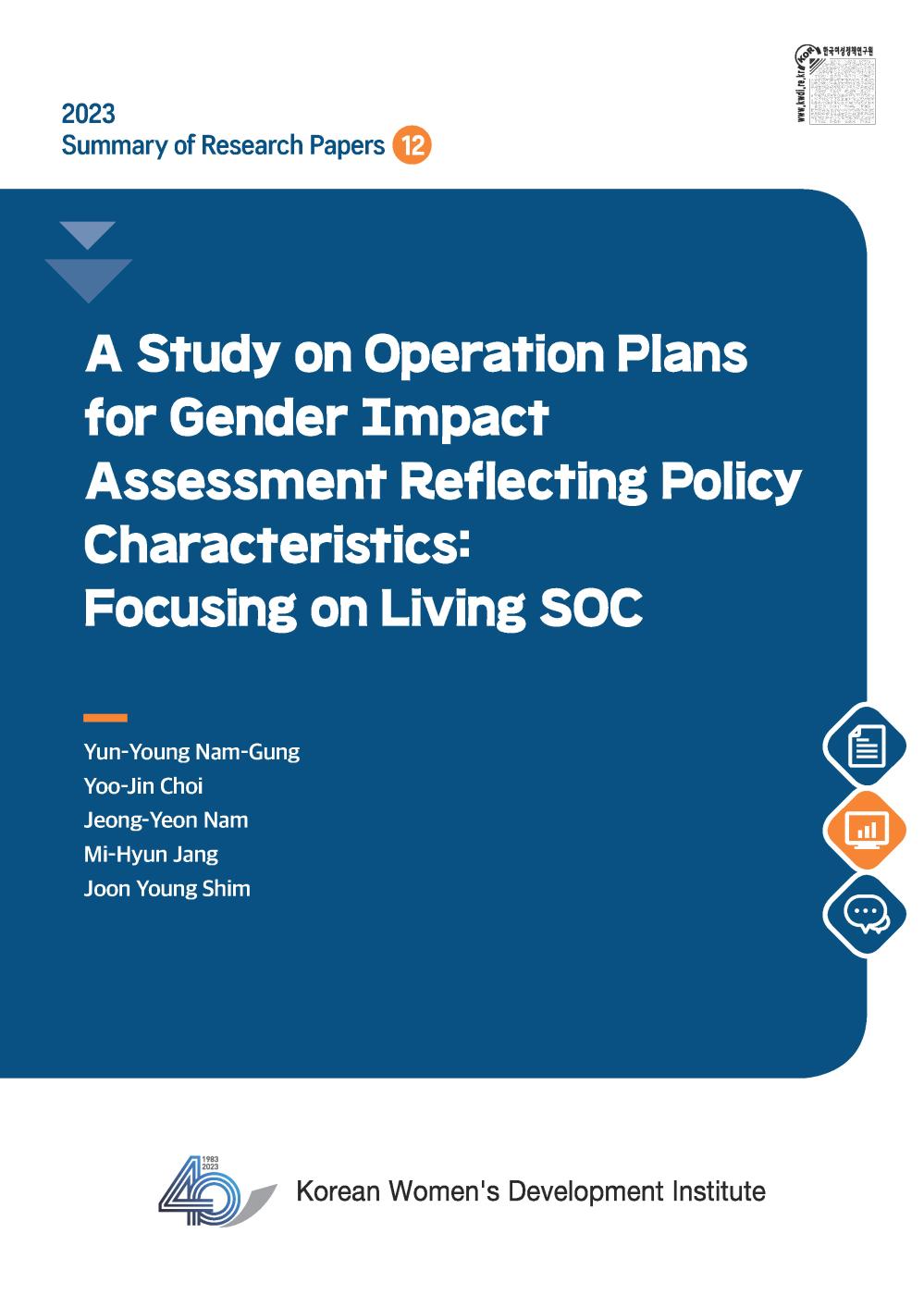Report
| A Study on Operation Plans for Gender Impact Assessment Reflecting Policy Characteristics: Focusing on Living SOC | |||
|---|---|---|---|
| Type | Basic | Period | 2023 |
| Manager | Yun-Young Nam-Gung | Date | 2023-12-29 |
| Fiie | 12_정책 특성을 반영한 성별영향평가 운영 방안 연구-생활SOC를 중심으로.pdf ( 2.52 MB ) | ||
|
Abstract A Study on Gender Impact Yun-Young Nam-Gung Yoo-Jin Choi Jeong-Yeon Nam Mi-Hyun Jang joon young Shim
Gender impact assessment has selected facility projects as a major target task in order to resolve gender inequality in facilities and spaces. However, while the decision-making process related to facility installation is carried out in phases over a long period of time, most of the gender impact assessments are conducted at the repair and operation stage, so the gender equality improvement proposals are also fragmented and segmented, showing limited effects. In addition, currently, gender impact assessment forms (indicators) specialized for people-targeted projects are applied to the gender impact assessment for public facilities, so the policy characteristics of public facilities are not reflected. In order to overcome the fact that the results of gender impact assessment in the facility sector are fragmentary, segmented, and formal, and to create a gender-sensitive space, it is necessary to conduct gender impact assessment in consideration of the characteristics and context of individual projects. Therefore, this study seeks to find a way to conduct gender impact assessment by reflecting the characteristics of public facilities and to establish and operate gender-sensitive public facilities so that all citizens can use public facilities without difficulty.
In this context, this study examines the theoretical discussion on the relevance of space and gender, the analysis frame of case studies in the field of space facilities considering gender issues, and reviews administrative data related to gender impact assessment in the field of facilities. In-depth interviews were conducted with about 30 public officials, gender impact assessment consultants, architects, and experts in charge of public facilities projects, including elements of gender impact assessment that reflect the characteristics of public facilities projects, problems at each stage of operation, and improvement plans.
Main findings of this study are as follows. First, it was difficult to find cases in which the location of public facilities and the status of residents' work and care were analyzed in the analysis of gender needs in the gender impact assessment of public sports facilities, public libraries, and family centers. Second, as a result of in-depth interviews, public officials' awareness of the right to access has increased, but they still have a limited awareness of fragmentary physical environment improvement, and through gender impact assessment, it was confirmed that there are many practical difficulties in improving the project. Third, the awareness of relevant stakeholders about the gender impact assessment system in the field of facility business is still insufficient, and it is found to be ineffective because it is operated in a formal way.
Considering the characteristics of public facilities sector policies, this study proposes the following steps to improve the operation of gender impact assessment. First, in order to create gender-equal facilities and spaces, appropriate gender impact assessment indicators must be applied to each stage of preparation and planning, design and construction, and management and operation. Second, it is necessary to proceed with the procedure for each stage of gender impact assessment reflecting the process of establishing public facilities. To this end, this study proposes to conduct a gender impact assessment once in the preparation and planning stage, once in the design and construction stage, and once in the management and operation stage, and also to conduct a gender impact assessment on the task instructions. Third, a practical improvement plan for gender equality must be prepared through a support system for gender impact assessment of public facilities, such as a professional consulting group in the field of facilities, systematic training, and monitoring.
Research areas: Gender Impact Assessment Keywords: Gender Impact Assessment, Public facilities, Cognitive accessibility, Participation |
|||
